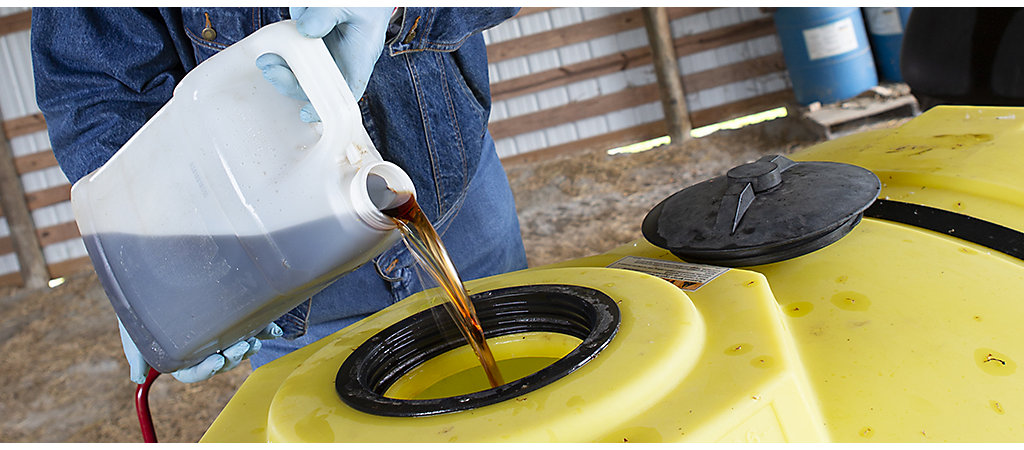Herbicide in liquid fertilizer?
DuraCor™ herbicide mixes easily into UAN or dry fertilizer
Compared with 2,4-D and all the 2,4-D-containing herbicides over the years, DuraCor™ herbicide offers a different experience in mixing and handling, say Corteva Agriscience experts.
That’s partly because DuraCor doesn’t contain 2,4-D, and:
- It doesn’t look like 2,4-D.
- It doesn’t smell like 2,4-D.
- It doesn’t mix like 2,4-D.
“The first thing the people notice about DuraCor is that it has virtually no odor — really none,” says Jerome Otto, a Nebraska-based market development specialist for Corteva Agriscience.
Last summer, Otto mixed and applied DurCor for a series of Innovation Showcases highlighting the new product. Then he repeatedly demonstrated the mixing of DuraCor into chilled urea ammonium nitrate (UAN) fertilizer at the field days.
“It never failed to go into solution,” he says.
Before mixing, Otto kept the liquid fertilizer on ice for 24 hours. That was to simulate the real-world experience of adding herbicide to a tank of UAN on an early spring morning — when temperatures could still be quite cool.
A challenge with 2,4-D-containing herbicides is the potential in the cold to coagulate into solids in the fertilizer solution. “‘Snotballs’ is one technical term used,” Otto offers. The problem can be minimized with an extra mixing step or two, but it does slow down the process.
“In contrast, DuraCor goes into solution in cold UAN extremely well with just a little agitation,” Otto says.
In his demonstrations, he added DuraCor herbicide to a container of chilled UAN, tightened the lid and inverted the container twice. That was enough to put the herbicide into solution with the fertilizer. In a sprayer, normal agitation will do the trick, he says.
Retailers also can use DuraCor to impregnate dry fertilizer. It’s a simple process for the retailer. The herbicide is sprayed on the dry fertilizer granules or pellets during the blending process.
To get an adequate dose of herbicide properly distributed, the herbicide should be applied in at least 200 pounds of dry fertilizer per acre. That’s the same process used with GrazonNext® HL herbicide since 2010. But it’s even easier now with DuraCor, Otto says.
“DuraCor is a more concentrated herbicide, so we’re using about half the rate of GrazonNext HL,” he says. “We’re putting half the amount of liquid on dry fertilizer, so it’s less tacky.”
The herbicide still works the same through dry fertilizer: Rainfall puts the herbicide and fertilizer into the soil. Weed control is almost entirely dependent on the soil residual activity of the herbicide and root uptake by the weeds.
Several of the mixing benefits of DuraCor are related to the suspension concentrate (SC) formulation, unusual among older pasture herbicides. As with all SC formulation types, Corteva recommends shaking or mixing the product prior to application for best results.
“If you’re handling jugs, that means shake well — just a quick up-and down turn with the jug, not like the cans of paint at the paint store,” Otto says. For drums and totes, Corteva recommends mixing for 30 minutes before the beginning of spray season and for 30 minutes once a month during the season.
Connect with Range & Pasture:



™®Trademarks of Dow AgroSciences, DuPont or Pioneer, and their affiliated companies or their respective owners. Milestone is not registered for sale or use in all states. Contact your state pesticide regulatory agency to determine if a product is registered for sale or use in your state. State restrictions on the sale and use of Remedy Ultra apply. Consult the label before purchase or use for full details. Always read and follow label directions.
